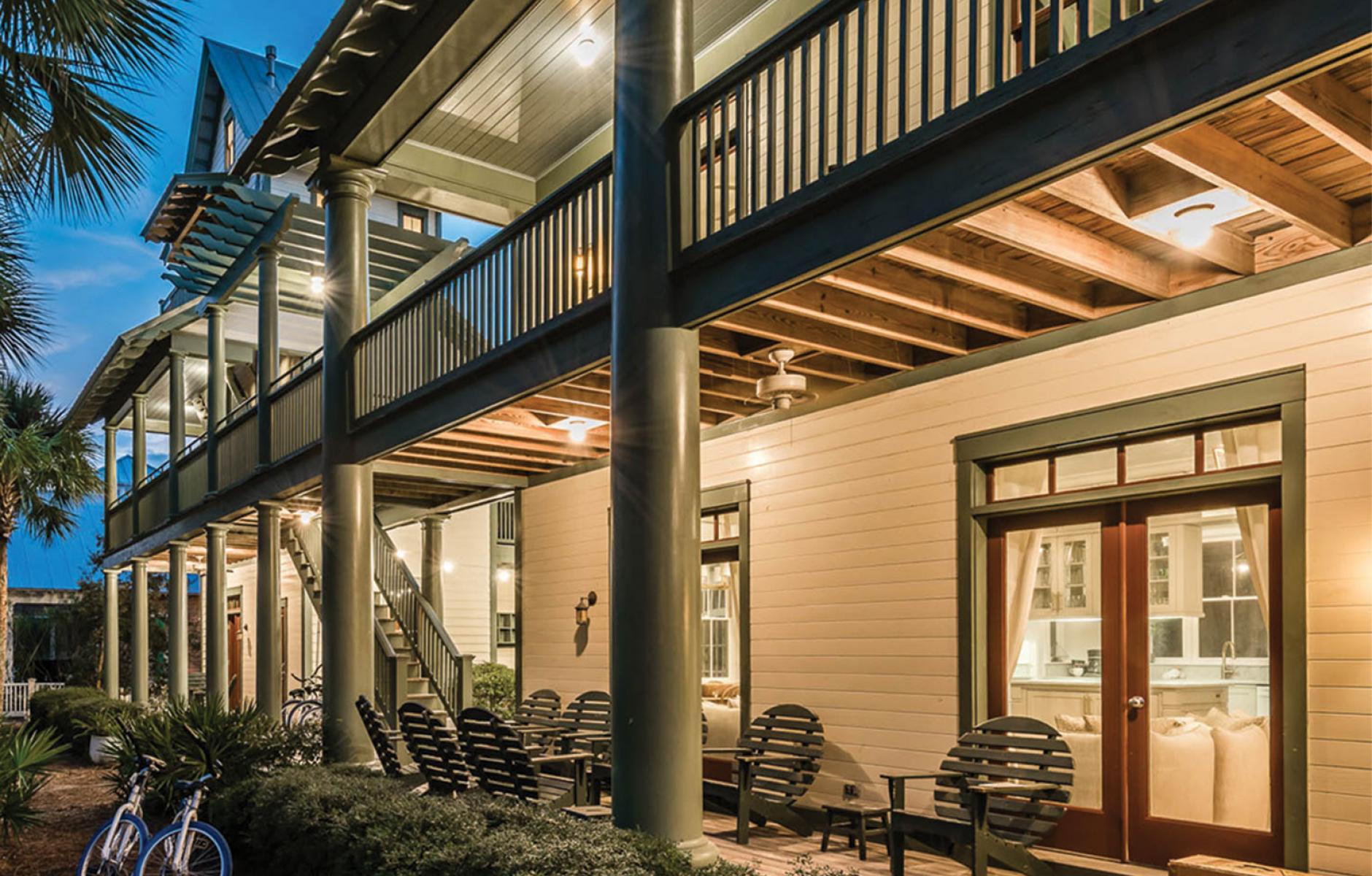
Making a new urbanist of me
The first time I visited Seaside, I knew very little about traditional neighborhood development. The trip was a vacation with 10 family members, including my parents. We made ourselves quite comfortable in an amazing home designed and owned by Robert Orr, called the Old Natchez Compound, which includes Old Natchez Main, Oak Creek Annie’s, and High Rustler.
The place clearly blurred the experience between indoors and out, with gracious expanses and a character at once private and neighborly. As grateful temporary inhabitants, we were constantly dropping out of circulation into a book on the porch or sketching the long view or sipping a beverage and then returning to interact with each other. The connection of the house to the street made us feel like we weren’t missing out on anything during these pauses. The quiet street life wafted up to us. Thinking about those decades-old memories brings a wave of delight.
In the not-too-distant future, my mother would start showing signs of dementia. She was becoming a homebody. Returning to the serene quietness of the Old Natchez Compound and Seaside’s friendly streets gave her an extra sense of calm. I was impressed that our individualistic family was more at home here than we had ever managed to be. There were multiple ways we could be together in small or large groups in the private and public space we inhabited. Everyone in our family ran their own company at one time or another, and our family get-togethers usually involved visiting one of our residences. Vacationing in Seaside was neutral ground, yet it felt deliciously exotic while putting us completely at ease.
Perhaps because of family dynamics, plus the fact that my siblings, Steve Mouzon and Susan Henderson, are urbanists and architects, I consumed the feeling and presence of Seaside in a way that I hadn’t related to a place before. We took long walks and family bike rides where my siblings pontificated about what was working so well in this town, and why. Long before its time, Seaside promoted skinny streets, ample sidewalks, demarcation of public and private realms, and light infrastructure to address stormwater management. What often was an eyesore in other towns was transformed into beloved amenity at Seaside.
One afternoon, I accidentally wandered into the next town and felt oddly unnerved by the wider streets and lack of intimacy. Later, after Seaside made an urbanist out of me with a little help from my siblings, I started to analyze and document the DNA of places. My goal was to understand what enabled local character to be celebrated as a matter of right, emulating the strategies that the founders and designers of Seaside did so gracefully. Working with other like-minded collaborators, our chronicle efforts are shared at CodesStudy.org.
Seaside put the engineer and MBA in me on a lifelong quest to study why these places give back so vigorously to society, the environment, and the economy.
Great places have the ability to inspire humankind. Seaside started a process for me, which includes observing, analyzing, and formulating data. I learned that I am not alone in the quest to improve the built environment. In my past life, I had spent years building wide, fast roads. Seaside made a palatable case for humane streets assembled in a meaningful network. The public realm balances the needs of pedestrians and vehicles, with the added benefit of fostering community life that nurtures people’s innate need to interact, share ideas, and engage in civil discourse.
This essay is one of 140 published in Reflections of Seaside: Muses, Ideas, Influences, New & Future Projects, by Dhiru A. Thadani, published by Rizzoli. Please order and purchase from your local independent bookstore.




